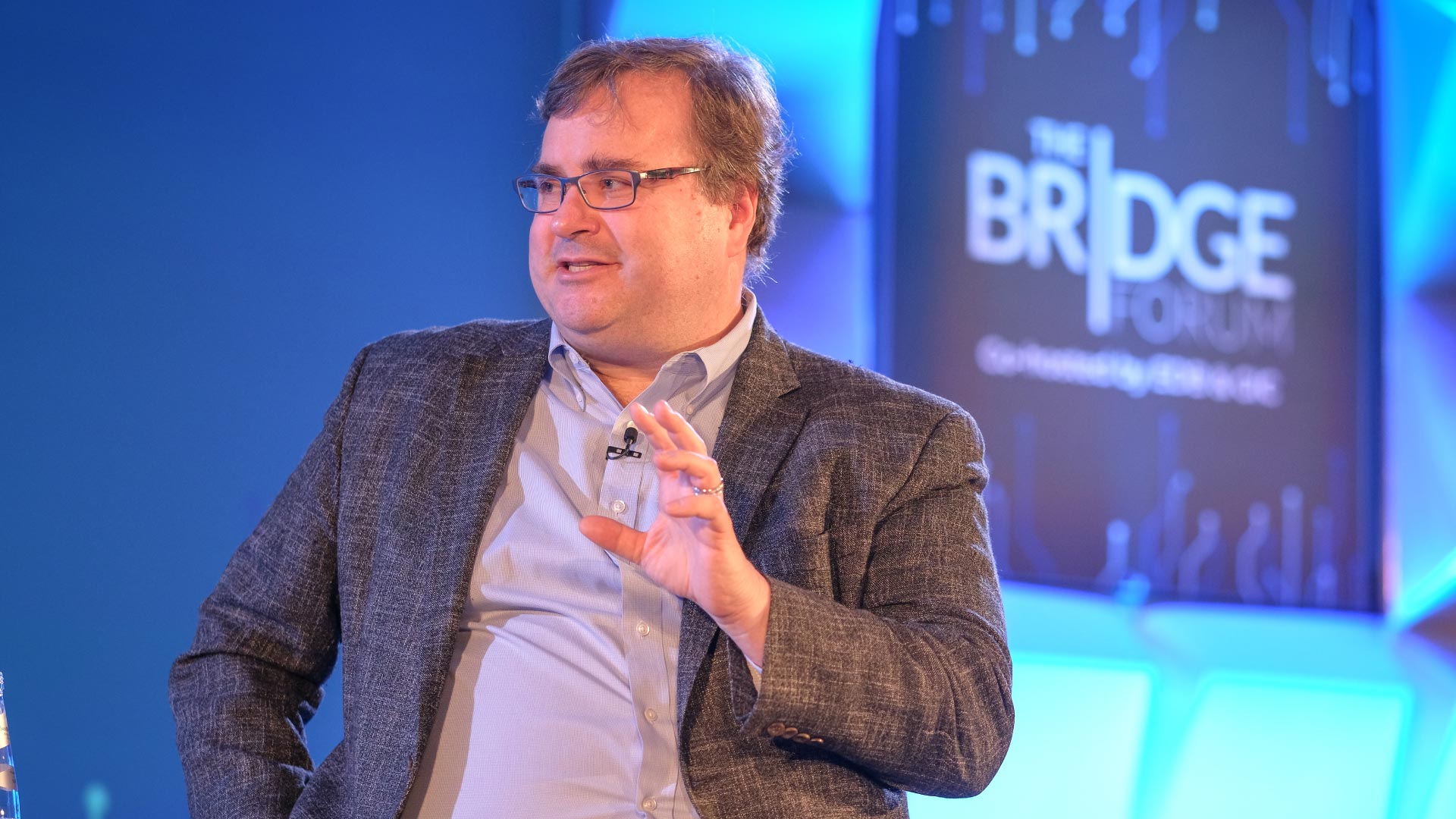An accomplished entrepreneur, executive, and investor, Reid Hoffman (Partner, Greylock Partners and Co-Founder, LinkedIn – full bio here) has played an integral role in building many of today’s leading consumer technology businesses, including LinkedIn and PayPal. He possesses a unique understanding of consumer behavior and the dynamics of viral businesses, as well as deep experience in driving companies from the earliest stages through periods of explosive, “blitzscale” growth. Ranging from LinkedIn to PayPal, from Airbnb to Convoy to Facebook, he invests in businesses with network effects and collaborates on building their product ecosystems.
Reid is the co-author of Blitzscaling and two New York Times best-selling books: The Start-up of You and The Alliance. He is also the host of the podcast, Masters of Scale.
In this edition of GIC Meets, Reid shares more about “blitzscaling”, the ultra-rapid growth by start-ups. For those who are less familiar with the concept, Reid explains this on Medium, “7 Counterintuitive Rules for Growing Your Business Super-Fast”.
What is blitzscaling?
The compact definition – prioritising speed over efficiency in an environment of uncertainty. This is especially relevant in today’s hyper-connected world.
Importantly, blitzscaling itself is not the goal. Rather, it is a strategic response to competition, or to the need to develop a particular product within a market.
In deciding whether to blitzscale, ask yourself – is there a huge market? Is there good product market fit? Are there characteristics of a mature business?
What gives blitzscalers an edge?
Blitzscaling is profoundly human. The willingness to embrace the irrational, to go against common sense and follow principles that are deeply counter-intuitive, makes it unique.
Given the intersections with artificial intelligence, automation, and other mass technological evolutions, it is easy to confuse blitzscaling with technology excellence. However, at its core, technology is simply the vehicle. What blitzscaling requires most is an explicit theory of human nature.
The best consumer technology companies have scaled not to technology, but to the humanity that makes their technology possible.
That is why blitzscaling is so powerful, and ultimately, responsible. It only works if it serves our shared humanity.
How can blitzscaling be applied successfully for…
Start-ups, as they grow?
As a company scales, its configurations will change continually and dramatically. The game changes each time, but part of the discipline of blitzscaling is to honour a fundamental, counter-intuitive rule – embrace chaos – at every stage of development.
While counter-intuitive, the essence of blitzscaling is to disrupt internal systems. Consider the potential by-products of embracing chaos. Customer complaints, “embarrassing” products, and management crash-and-burns are some examples. It will require great discipline to persevere when these occur. Most companies go to great lengths to avoid these, but they cannot be avoided if you are determined to blitzscale.
Large companies venturing into new businesses?
First, corporations need to weigh opportunities and challenges in order to decide if blitzscaling is the appropriate response.
Second, blitzscaling as a large company can succeed if everyone whose support is critical is prepared and committed. The executive team must condition investors on the demands, risks, and goals of blitzscaling. Focus on the long game, instead of paralyzing the process with unproductive dialogue.
Third, within the company, the blitzscaling team must be isolated and have unique rules. The rest of the company also needs to be comfortable with this isolation. Internal dynamics therefore need to be navigated carefully, and human factor considerations addressed.
Companies with a global team?
Most companies that blitzscale do actually end up in multiple geographies.
Again, the key is to embrace chaos, while also ensuring that chaos is contained where necessary. Create a coherent culture and build social connectivity. Techniques that work well include moderately overinvesting in travel for the executive team, prioritising locations with direct flights, and establishing video conferences as a regular form of communication.
Tell us more about “responsible blitzscaling”.
Many things can go wrong when you blitzscale, but there are ways to reduce the likelihood of these. You can build in responsibility as you scale without reducing speed.
For example, identify risks early and introduce a “red team” focused on managing these internally.
Differentiate inconvenient failures (that can be addressed later) from critical ones (to be addressed immediately).
Reinforce the expectation of dynamic, ongoing change over stability. Set and communicate company values. When people know what they are working for and have a clear sense of the mission, they can better handle uncertainty and choose positive behaviours when things do get rough.
What advice would you give to founders who are looking to blitzscale?
Be an infinite learner. This is a great characteristic for any leader, but especially so when navigating extreme dynamism and change.
Success tends to imprint more than failure. It is really important to identify what factors from previous successes need to be abandoned and re-learnt for future successes.







